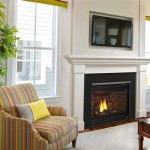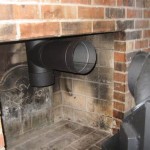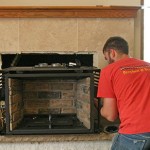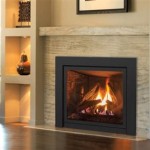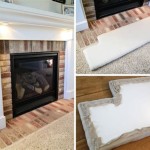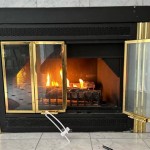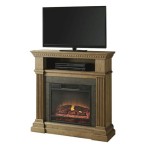Stones In Fireplace: Selection, Installation, and Maintenance
Fireplaces provide warmth, ambiance, and a focal point for living spaces. The choice of materials used in their construction significantly impacts their aesthetics, performance, and longevity. Stones, whether natural or manufactured, are a popular option for fireplace surrounds, hearths, and interiors due to their durability, beauty, and ability to withstand high temperatures. This article explores the various aspects of using stones in fireplaces, covering selection criteria, installation techniques, and essential maintenance practices.
Choosing the Right Stone for a Fireplace
The selection of appropriate stones for a fireplace involves careful consideration of several factors. These factors include the stone's heat resistance, appearance, porosity, and suitability for the intended application. Certain types of stone are better suited for fireplaces than others.
Heat Resistance:
The primary characteristic to consider is the stone's ability to withstand high temperatures without cracking, crumbling, or discoloring. Igneous rocks, formed from cooled magma or lava, generally possess excellent heat resistance. Examples include granite, basalt, and slate. Sedimentary rocks, such as limestone and sandstone, can also be suitable but may require sealing to prevent moisture absorption and potential damage from rapid temperature changes. Metamorphic rocks, altered by heat and pressure, like marble and quartzite, offer varying degrees of heat resistance. Marble, although visually appealing, can be more susceptible to staining and etching from soot and acidic cleaning agents.Appearance:
The desired aesthetic plays a crucial role in stone selection. Options range from the rustic, textured look of fieldstone to the smooth, polished surface of granite. Color, pattern, and overall visual appeal should complement the architectural style of the home and the intended design of the fireplace. Uniformity in color and texture can create a contemporary look, while variations in natural stone provide a more traditional or rustic feel. Natural stone offers a unique character that manufactured stone may attempt to replicate but cannot fully duplicate.Porosity:
The porosity of a stone affects its ability to absorb moisture and resist staining. Highly porous stones, such as some types of sandstone and limestone, require sealing to prevent damage from water, soot, and other contaminants. Sealants create a protective barrier that reduces the stone's absorbency and makes it easier to clean. Granite and slate, being less porous, generally require less maintenance and are more resistant to staining. The choice depends on aesthetic preferences and willingness to dedicate more time to sealing and cleaning.Application:
The specific application within the fireplace determines the type of stone best suited. For the firebox interior, heat-resistant stones like firebrick or certain types of slate are ideal. The hearth, which supports the fireplace and extends into the room, can accommodate a wider range of stones, including granite, slate, and certain types of limestone. The fireplace surround, which frames the firebox, offers the most flexibility in terms of stone selection, as it is not directly exposed to the highest temperatures.Installing Stones in a Fireplace: Best Practices
Proper installation is critical to the long-term performance and appearance of a stone fireplace. The process involves preparing the substrate, applying mortar, setting the stones, and grouting the joints. Adherence to established building codes and manufacturer's instructions is essential.
Substrate Preparation:
The substrate, which is the surface to which the stones are adhered, must be clean, level, and structurally sound. Typically, this involves installing cement board or a similar fire-resistant material over the existing wall or framing. The substrate should be secured to the studs or masonry with appropriate fasteners. Cracks or imperfections in the substrate must be repaired before proceeding. Applying a scratch coat of mortar to the cement board can improve adhesion and create a more uniform surface for setting the stones.Mortar Application:
Selecting the correct type of mortar is crucial for a durable and heat-resistant installation. Refractory mortar, specifically designed for high-temperature applications, is recommended for the firebox interior. For the surround and hearth, a high-quality thin-set mortar designed for stone is typically sufficient. The mortar should be mixed according to the manufacturer's instructions, achieving a consistency similar to peanut butter. The mortar is then applied to the back of each stone using a notched trowel, ensuring thorough coverage. The depth of the mortar bed should be consistent to maintain a level surface.Stone Setting:
Stones are carefully placed onto the substrate, pressing them firmly into the mortar. Spacers can be used to maintain consistent joint widths. The stones should be leveled and aligned as they are set, using a rubber mallet to make minor adjustments. It's important to work in manageable sections, allowing the mortar to set partially before moving on. Large or heavy stones may require temporary supports to prevent them from shifting or falling during the curing process. Maintaining a consistent pattern and ensuring proper bonding between the stones enhances the structural integrity and aesthetic appeal of the fireplace.Grouting:
Once the mortar has cured for the recommended period, the joints between the stones can be grouted. The type of grout should be compatible with the mortar and stone being used. Unsanded grout is typically used for narrow joints, while sanded grout is suitable for wider joints. The grout is applied using a grout float, forcing it into the joints and removing excess grout from the stone surface. After the grout has partially set, it is cleaned with a damp sponge, ensuring that the grout lines are smooth and even. A grout sealer can be applied to protect the grout from staining and moisture absorption.Maintaining Stones in a Fireplace for Longevity
Regular maintenance is essential to preserve the appearance and structural integrity of a stone fireplace. This includes cleaning, sealing, and inspecting for any signs of damage or deterioration.
Cleaning:
Cleaning the stone surface regularly helps prevent the buildup of soot, dirt, and other contaminants. The frequency of cleaning depends on the frequency of fireplace use and the type of stone. For lightly soiled surfaces, a mild detergent and water solution can be used. More stubborn stains may require specialized stone cleaners. A soft brush or sponge should be used to avoid scratching the stone surface. Avoid using abrasive cleaners or harsh chemicals, as they can damage the stone and alter its appearance. Rinsing the stone thoroughly with clean water after cleaning is important to remove any residual cleaning agents.Sealing:
Sealing porous stones, such as limestone and sandstone, is crucial to protect them from staining and moisture absorption. The frequency of sealing depends on the type of sealant used and the level of exposure to moisture and contaminants. A penetrating sealant, which soaks into the stone's pores, is typically recommended for fireplaces. The sealant should be applied according to the manufacturer's instructions, ensuring thorough coverage. Periodic reapplication of the sealant is necessary to maintain its protective properties. Regular inspection of the stone surface for signs of water damage or staining can help determine when resealing is necessary.Inspection and Repair:
Regular inspection of the fireplace for cracks, loose stones, or deteriorating mortar joints is important. Minor cracks can be repaired with appropriate patching compounds designed for stone. Loose stones should be reattached with mortar. Deteriorating mortar joints should be raked out and re-pointed with fresh mortar. Addressing these issues promptly can prevent further damage and extend the lifespan of the fireplace. If significant damage is detected, professional assistance from a qualified mason may be required. Neglecting repairs can lead to structural instability and potential safety hazards.By carefully selecting the appropriate stones, employing proper installation techniques, and implementing a consistent maintenance program, homeowners can ensure that their stone fireplaces provide lasting beauty, warmth, and enjoyment for years to come. The integration of these elements is critical to maximizing the functionality and aesthetic value of this important architectural feature.

Fireplaces Eldorado Stone

How To Whitewash A Stone Fireplace Super Easy Project Designs By Karan

Natural Stacked Stone Veneer Fireplace Ideas

Stone Fireplace Surround Ideas You Ll Love Columbia Mo

Why Natural Stone Is The Best Choice For Your Fireplace

Professional Stonework Stone Fireplace Surround Hearths
:strip_icc()/Screenshot2021-10-19at09-16-46Portfolio-AmyBartlamPhotography-1f35ea9ec29846779a2d62b42676eff9.png?strip=all)
20 Best Stone Fireplace Ideas

5 Stacked Stone Surrounds Travertine Quartzite Or Marble

12 Stacked Stone Fireplace Ideas For Optimal Coziness

Thin Stone Veneers Make A Fireplace Update Easy
Related Posts

